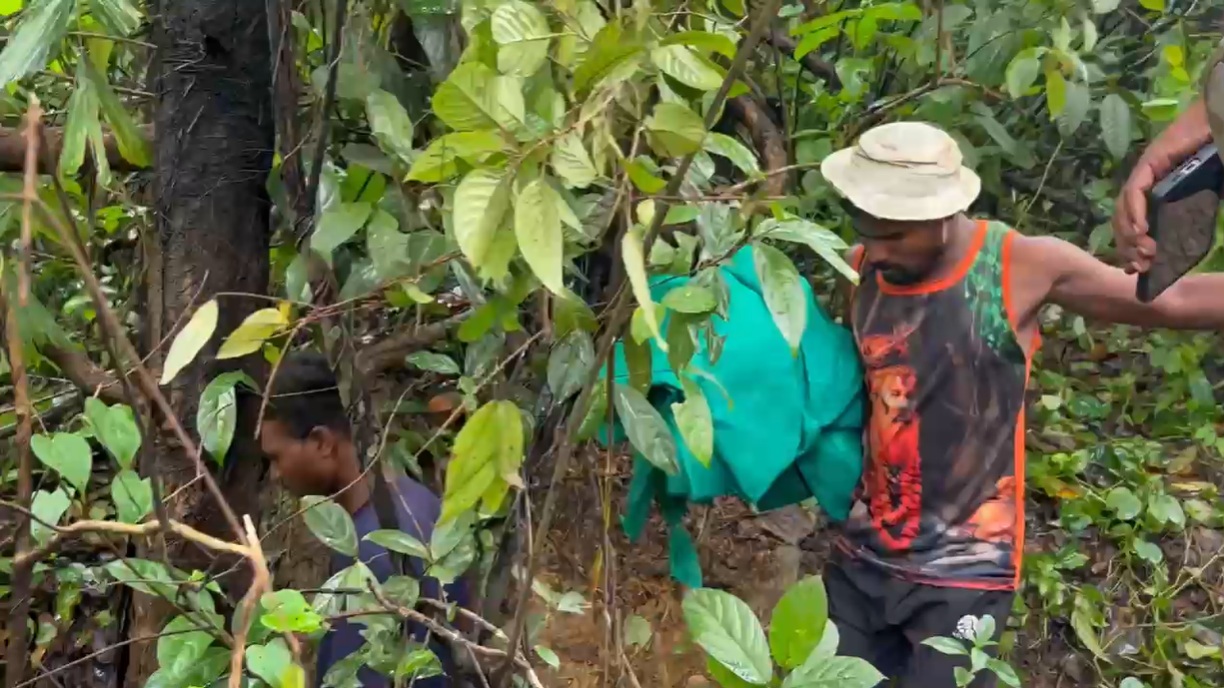Though a forensic confirmation is pending, police suspect the remains found are those of a male.
Published Jul 31, 2025 | 2:01 PM ⚊ Updated Jul 31, 2025 | 3:09 PM

The human skeletal remains were found at the sixth site identified by the whistleblower. (Screengrab)
Synopsis: Digging at the first five sites did not provide any evidence supporting the whistleblower’s allegation. The man had identified 15 burial sites in Dharmasthala.
Partial human skeletal remains were found at the sixth burial site during the exhuming process on Thursday, 31 July, three days after the Special Investigation Team (SIT) probing alleged sexual assaults and murders at Dharmasthala in Karnataka’s Dakshina Kannada district.
The Karnataka government formed an SIT comprising senior police officers after a former sanitation worker of the Dharmasthala Manjunatha temple alleged a 20-year cover-up of murders and sexual assaults. The man further said he was forced into burying several bodies of girls, women, and vagabonds. Most bodies, he said, bore signs of sexual assault.
The whistleblower had identified 15 burial sites. The first eight locations are along the banks of the Nethravathi River. Locations 9 to 12 are beside the highway near the river. The 13th is on the road connecting Nethravathi to Aajukuri, and the remaining two, 14 and 15, are in the Kanyadi area near the highway.
Digging at the first five sites pointed out by the whistleblower did not provide any evidence supporting his allegation. The sixth one provided evidence, and police officers said they suspected the remains were those of a man. However, a forensic analysis is pending.
Forensic experts at the scene took over the remains to test them to determine the age, origin, and circumstances that led to the individual’s death.
Former Director General & Inspector General of Karnataka police RK Dutta spoke about the possibilities ahead.
“Wherever a body is found, an inquest is conducted by the investigating officer, but in case of certain other deaths, the inquest will be held in the presence of a magistrate,” he told South First.
He opined that in the Dharmasthala case, the inquest must be done in a magistrate’s presence, considering its controversial and sensitive nature.
Dutta said a forensic doctor would ascertain whether the exhumed skeletal remains were those of a human.
“The forensic doctor can find out if the deceased is a male or female. The bones will also help them tell the possible age of the deceased,” he said.
The former top cop said any related objects found nearby would help in identifying the deceased. If not, the investigators will have to make oral inquiries, and go through police records to establish the identity.
He predicted that since the evidence had almost vanished, the investigation would be a long process. “But with sustained investigation, I can tell you, the police can crack this case,” Dutta added.
